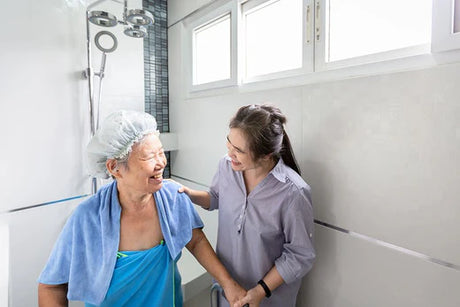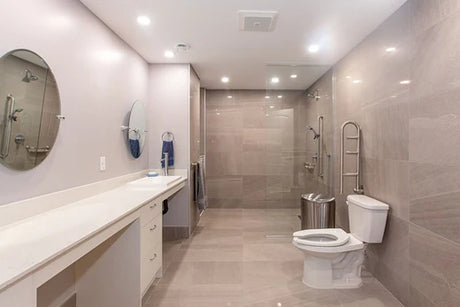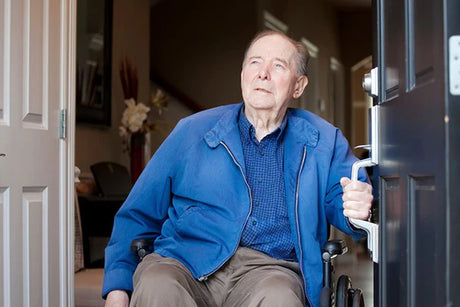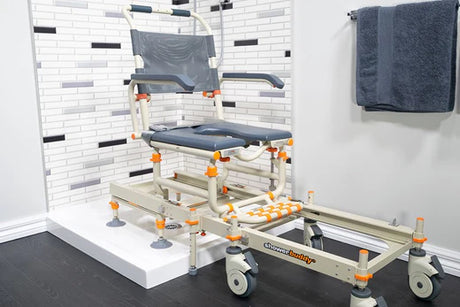Why public restrooms can present a big challenge for mobility-impaired people
Unfortunately most bathrooms – both in the public area and within the stalls, aren’t designed for those with disabilities. When there is a disabled toilet stall in the toilets, it’s often occupied. And when you can access the disabled toilets, it’s not a guarantee that the design will accommodate all needs such as grab bars, a sink height that’s accessible and a doorway that allows a wheelchair or walker to clear easily.
Lots of restaurants and cafes often have their toilets take up a pretty small footprint in relation to the building – sometimes there’s only one non- accessible toilet to be used.
The lighting can also be poor which is a hazard for any mobility impaired person, even without a visual impairment. This can be even more difficult when the floor has water or other spills across it.
If there’s not an accessible stall that allows a carer to attend to the individual, then privacy is another big concern – who wants to use the toilet with the door open whilst in public?
There’s not nearly enough accessible bathrooms in our communities – and with a big percentage of the population experiencing some sort of physical impairment, we’d like to see more public facilities available.
Doing the research on accessible bathrooms in your area
So what can we do to make public toilet use more accessible and less stressful? The first thing to do is research the town or city you’re in. A quick search engine search can give you some clues about where the community toilets are located and whether they offer disabled stalls or not. If you’re travelling, you can also research the tourist locations in each area you plan on visiting and check that they have accessible facilities to use.
In your own town or city, it can be a good idea to map out all the known accessible toilets before and after you’ve tried them. Most map tools on a smartphone can allow you to ‘drop a pin’ on locations where you can label locations known to be good for accessibility.
Ensuring an easy (and safe) entry and exit

Accessibility features to look for in a bathroom stall
There are some compliance regulations around accessible bathrooms in modern buildings – these vary from country to country (or state to state). But here’s some typical features you should look out for:
- Comfortable space for a wheelchair and carer to fit as well as the user. The area should allow for easy 360 movement and quick evacuation.
- Grab bars – as we’ve mentioned, these are excellent for users to get more stability or to move around the stall in a wheelchair.
- Low toilets – the standard toilet height can present a challenge to mount for those with lower body or back mobility issues.
- Easy locking and unlocking
- Anti-slip flooring – the last thing anyone wants to deal with is a slippery floor that can create a fall injury.
- Emergency call system – calling for help if stuck or in the event of an emergency is something every accessible toilet should offer.
Safely using the toilet
It’s also a good idea to make use of any supports installed – most commonly grab bars. If the individual has the upper body strength and ability to use these, it can provide a much safer toileting experience.
Transferring onto the toilet can become a hazardous movement – one of the many reasons why the SB7e Eco Traveller from Showerbuddy is so popular – the chair fits over the toilet requiring no manual transfer or contact with the toilet seat (a great benefit from those with concerns about public restroom hygiene!)
Hygiene and cleaning up
Navigating public restrooms isn’t just about reducing the hazards associated with falls. It’s also about staying hygienic throughout the process. If you’re using the toilet (or helping someone to do so) in public, we’d suggest bringing some provisions in the day pack with you to keep things clean:
- Hand sanitiser
- Anti-bacterial wipes
- Small hand wash
- Change of clothes
The bathroom should hopefully be clean enough to use, but this won’t always be the case. It’s important to alert attendants to any cleanliness issues so they’re sorted out quickly.
Other things to look for are soap dispensers and basin taps that have easily-reachable buttons/levers. A well-equipped toilet will make washing up simple and struggle-free.
Drying off
More accessible bathrooms needed
At Showerbuddy we provide a solution to help make almost any bathroom a mobility-friendly experience. For out of home users, we’d encourage you to check out the SB7e Eco Traveller. This comfortable, compact option can alleviate many of the concerns we’ve highlighted in this article.
Learn more about Showerbuddy Sb7e

It can be challenging finding the perfect accessible bathroom wherever you go – especially if away on holiday somewhere you’re not familiar with. Showerbuddy’s SB7e EcoTraveller is an excellent answer to this challenge, with its compact design and easy pack-down. The SB7e turns almost any bathroom into an accessible one, bringing the comfort of the Showerbuddy range out of the home. You can learn more about Showerbuddy or, get in touch with our team to arrange a demo with your nearest distributor.
Further Reading
- Accessible bathrooms around New Zealand – Carers.net.nz
- National toilet map in Australia – Australian Government
- Guide to the ADA Accessibility Standards – U.S. Access Board
















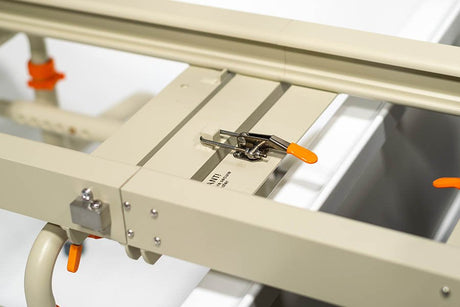











![Toilet Training A Young Child With Mobility Challenges [And How A Shower Chair Can Help]](http://shower-buddy.com/cdn/shop/articles/toilet-training-disabled-child_520x500_a90e5234-d372-435d-aa56-8da15dd3836c.webp?v=1722557239&width=460)







